Lorem ipsum dolore
Consectetuer adipi scing elit. Mauris urna urna varius et interdum a, tincidunt quis, libero. Aenean sit.
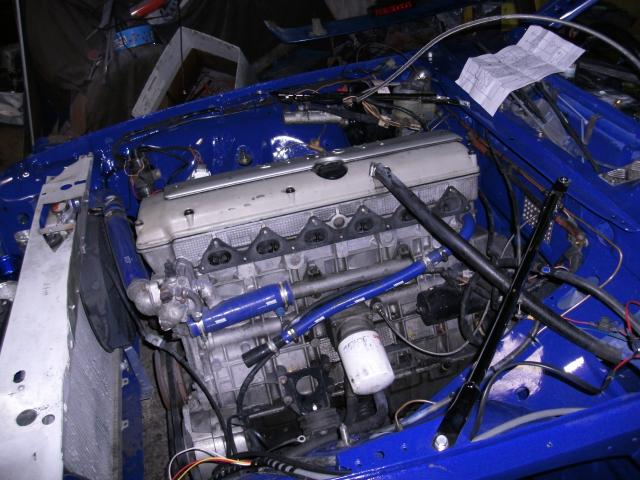
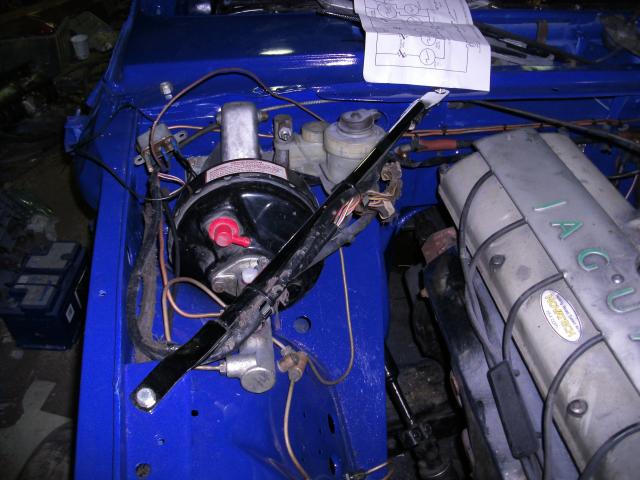
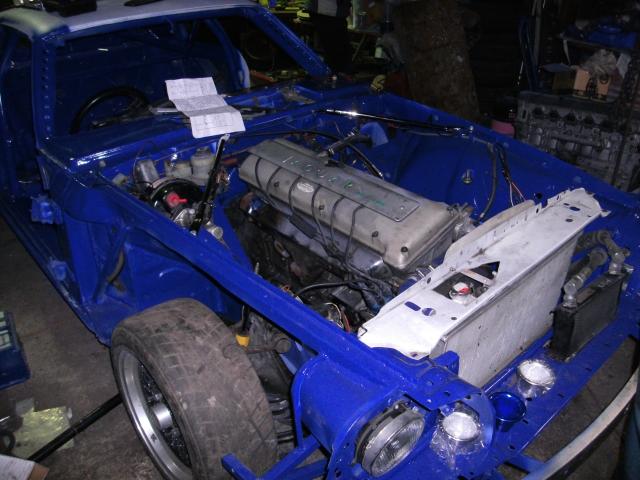
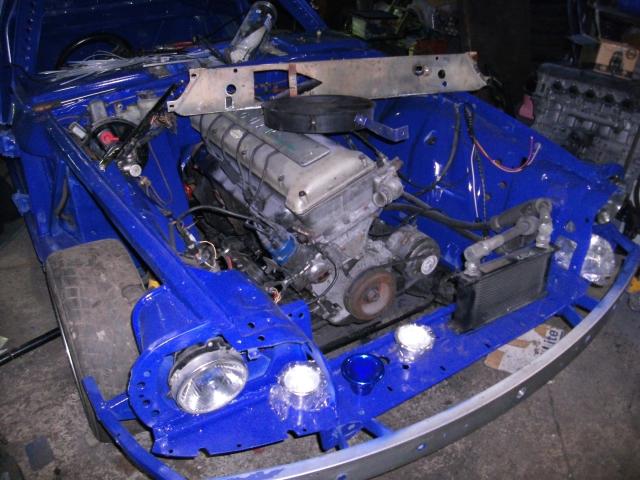
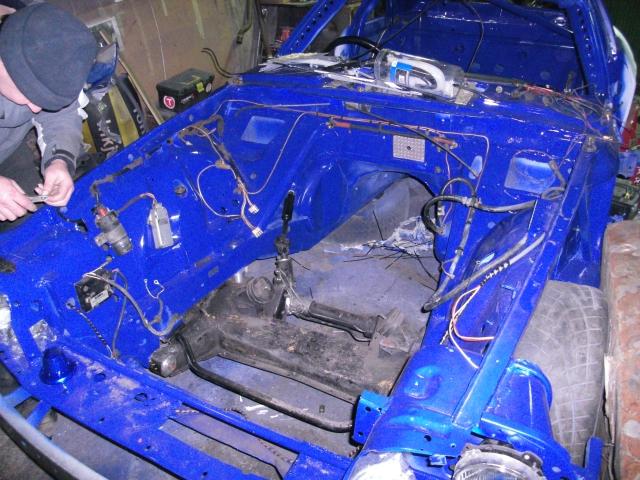
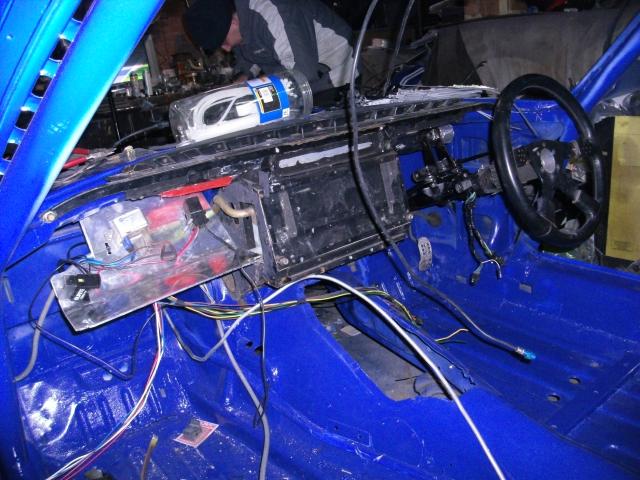
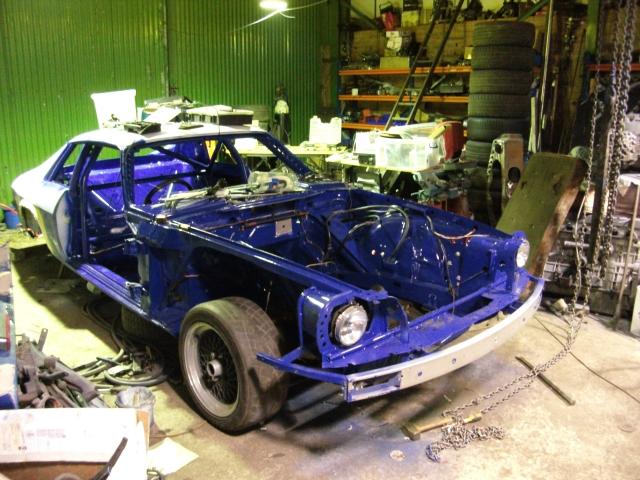
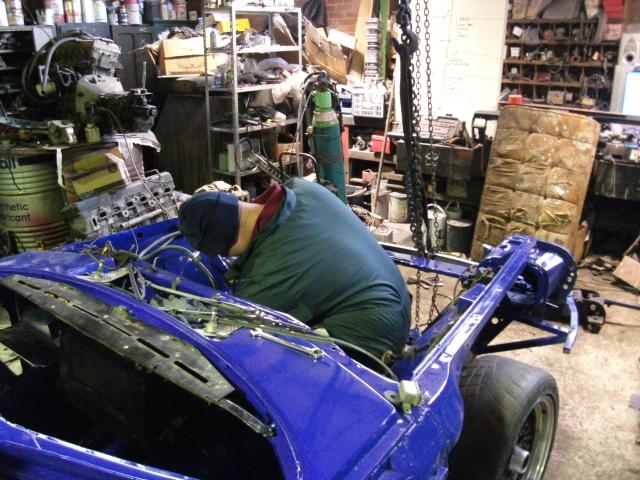

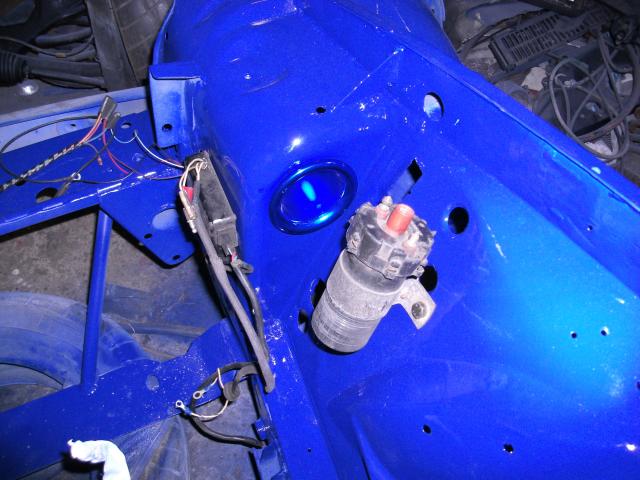
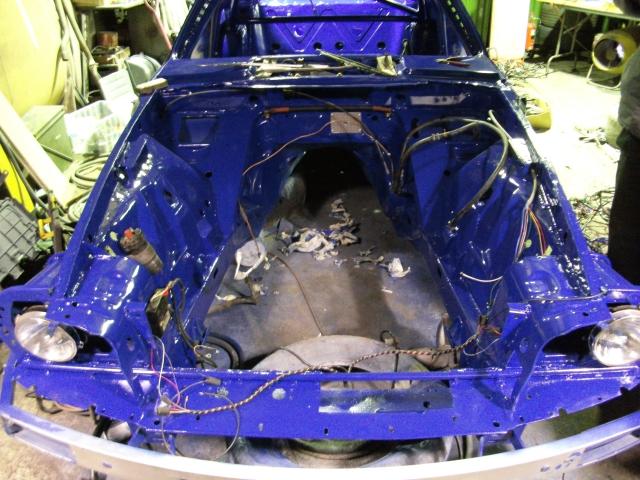
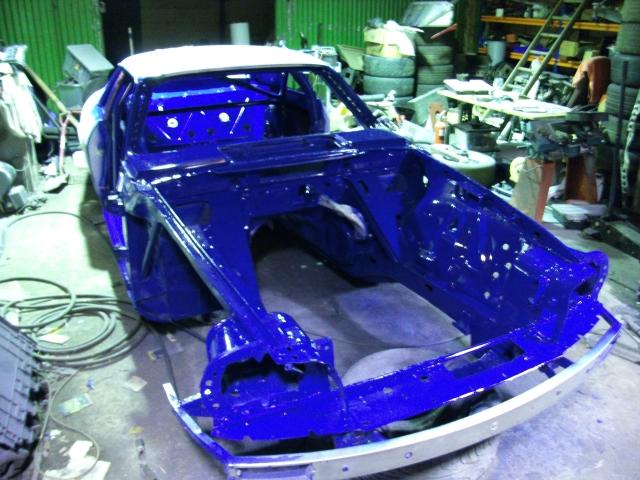
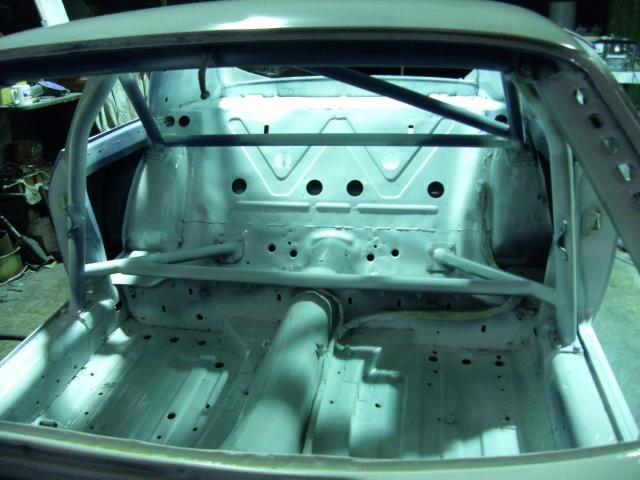
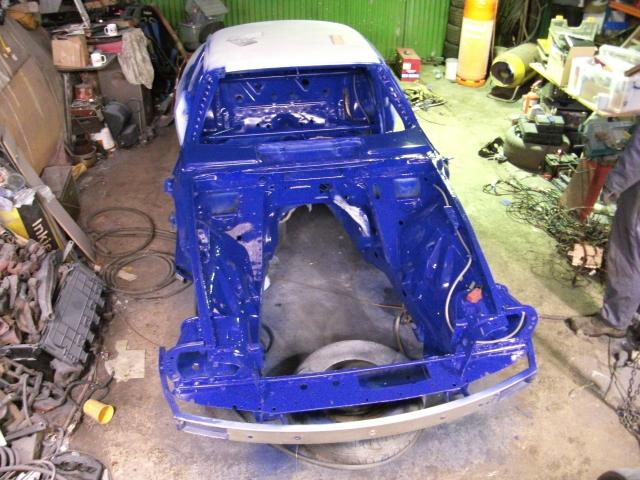
.
Part VII
A flurry of activity this week, with a bit of a sting in the tale. That’s a deliberate “tale” by the way!
White primer turns this car into a giant ice cube. The two pack primer dries to a completely different finish than conventional primer filler grey, it behaves differently when sanded, and it leaves such a smooth undercoat that it is, to my mind, why some cars now turn out looking so glossy that they seem almost plastic.
Not that I’m actually complaining, and when thrown haphazardly at the underbonnet and interior it helps disguise some of the difficult areas. Inside the car it strikes me that there are three main areas for attention, the two sills, the passenger floorpan, and the tunnel. Get those looking vaguely right and the rest is unimportant. Some attention to these areas does therefore take a little time, though it’s the cage that really absorbs the hours, there is just so much of it. The weather isn’t helping. I know it’s February and all that, and we northern types are quite happy in the snow, but five or six below freezing doesn’t help the paint dry.
With chief engineer due to arrive on the Friday evening, the car is intended to be ready to accept gloss by Friday lunchtime, giving it overnight to dry and work to commence Saturday morning stringing the main power cable through the pristine shell. It all goes awry as a dispute about precisely what “Friday” means has us unexpectedly presented with a McGivern on Thursday evening. The further sanding goes on holiday, and the compressor thumps into the night, a blue haze drifts across the wilds of Rotherham as the car turns from white elephant into angry smurf.
Painting the interior is very difficult. The cage makes this a Gordian knot of a problem, every angle you fire the paint at to cover all sides of each tube has the effect of painting something else, leaving you either with parts uncovered, or runs. A lot of swearing inside the breathing mask does eventually produce a result that I can live with. There are some bits missed that a second attempt at later will fix, but there is enough done in here that parts can be fitted.
The underbonnet is far easier, better prepared and with a lot of the angles already tackled from underneath. The boot, well, it’s the boot. Make it the right colour and call that done.
Assembly can now begin. A great deal of time is saved in that the bits I really want to rebuild on the car aren’t getting touched until after Brands. Top priority is to get the car laid out for the wiring genius. We only have him for a limited time, and he wants to make a neat job. We know it can’t be done in the time available, he knows it can’t be done, but he’ll try anyway and he’ll be very cross with himself come Sunday lunchtime that he hasn’t been able to make the car both invisible and capable of space flight. All we need, however, is the car to run at a trackday, meaning the engine and ancillaries need to work, and the wipers in case it rains.
Wiring a Jag from scratch is not all that simple. Doing so neatly is less so. Doing it neatly with all the requirements we have imposed on him is nigh on impossible. Must be capable of passing an MOT. Dash should be removable without having to disrupt the wiring. Nothing should weigh anything. All major switches must be operable by a seated and belted driver with short arms. Rather him than me.
The operating temperatures of a southerner do require additional warmth, and the blast of the propane flame thrower thaws the ice long enough for wiring to commence. As he rightly notes though, the cold permeates the job, insulation is stiff, wires unco-operative. Things just take longer when frozen. If there were a tea urn in this garage we suspect David would have it piped into a length of cunifer wound around his legs.
Assembly is swift. After all, all these pieces came off this car, it’s mostly a question of remembering where I put them, cleaning them off, and refitting. A few pieces, however, are resited. The car runs original 1983 ignition, without any tweaks or changes. It did have an AJ6 Engineering ECU back in the day, but I’ve not had that fitted since early 2009, and haven’t noticed any difference whatsoever since refitting a standard item – troubleshooting Bear’s car at Brands in 2009 saw Helen robbed of her ecu and his fitted instead. I never noticed any change in power whatsoever, plug any old XJS ecu of the same age in and off she goes.
What this means is that I have one of those old aluminium bodied ignition amplifiers that like to be kept cold, and a coil which also likes a bit of cooling. The coil now has its own air feed from the headlight. Overkill, yes, certainly, but it’s done. For wet weather running this is simply blanked off, no sense soaking the thing. The amplifier used to be located on the slam panel, but we remove all components from that to make removing the radiator faster, so it was relocated to the inner wing. It is now moved again to the gap twixt radiator and headlight pod inner, right into the airflow. Hopefully this will extend its life, as they do fail with heat, they aren’t easy to come by, and they are hugely expensive to buy new.
New shiny nuts and bolts come courtesy of a broken X300 – new enough that all the nice gold plating on the bolt is still bright – and that pile of refinished parts previously salvaged and sent for a good coat of shiny zinc plating. No sense buying things if we don’t need to.
Fuel and brake lines are easy, we never took out the fuel lines, because as a solid run of cunifer they are a devil to get in and out, so once in they stay there. The brake lines were removed and carefully stored as they were, so they are simply refitted, everything lines up exactly where it came from. Except of course I then decide to make a few changes to the route. Fortunately thinner diameter cunifer is most compliant and bends to your will.
It is, however, noted that the original flares on the master cylinder end of the brake lines appear to be partially obstructed, so they are carefully reamed out to ensure full flow. If that actually makes a difference we shall see. Unlike most XJS I’ve never had an issue with over-braking the rear. A partially obstructed rear brake line would explain that. That said, neither did the old car, and her brakelines were Jaguar original, so perhaps I worry for naught.
The front anti roll bar is refitted, and then the subframe jumps in, fitted now with the Bear’s custom aluminium bushes and rear mounts, bolted solidly through the chassis. The engine bay comes together quickly, the pedal box has been apart, all cylinders resealed, the aluminium of the pedal assembly itself given the bi-annual once-over with the wire brush, reassembled and refitted. The car is already modified to allow it to be refitted without the need to remove the brake pedal cover, a slot was cut in the car when first assembled
Throttle fitting is a matter of moments, though the steering column takes longer. No matter how many of these we do, I always forget the order to assemble these. For the avoidance of doubt – rubber grommet thingy screwed in first, lower column to rack next, bottom UJ removed from upper column and fitted to lower column, upper column attached to it last, then the column hung from the car. Why in this order? Because in the older XJS the cut outs for pinch bolts are all one-way only, except for that last one, which can be fitted any which way up you want without any fiddling. Try doing it otherwise and you have a much bigger fight on your hands to align the pinch bolt. Simples.
Whilst we’re going classic touring car, and I don’t therefore need it, the power assistance is still getting refitted. Nothing to do with my advancing years, it’s just that not only am I used to driving with it, but should we ever wish to add monumental castor, we have the assistance to overcome it.
For something to do whilst his mind wakes up, the wiring slave tackles the lights. It’s so easy the way he does it, so simple it’s criminal that anyone anywhere should ever do it otherwise. I do wonder why road cars have become so complex. Perhaps I’m actually stuck in my old MGB mode, where bulb failure is identified by a quick walk around once a week and a light “unit” failing means waggling an earth wire rather than a trip to the dealer with a pain in the wallet.
The trick now is to bolt on all the pieces that need to be attached, whilst staying out of his way, because it is easier to wire the bare shell, but conversely it needs to all be there in order to wire up. We have yet to crack this particular headache, our solution is usually to assemble the car around him, but it’s not quite right, the best result of the lot so far was Vanessa, which involved two separate goes at the wiring, a preliminary run of wire, and a later, connect it all up visit. From the grumblings emitting from the frozen Southerner I can’t help but feel something similar might be on the cards here.
The heater box goes back in, not because I need it, but because getting it in and out really requires the dash out, and for class F I need it in there. Carrying the weight penalty of having it has to be balanced against the ease of changing the car’s “mode” for other races. As it is pretty central in terms of balance, and as we don’t need to put the car on much of a diet for the Pre-93 Touring Car series anyway, it can stay in. The padding that sits atop the dash is also fitted, but it does have the standard Kutuka mod, a slot cut in it so that you can access that single, central rogue screw that joins heater to car. The interior brakelight then sits in this slot. Yes, interior brakelight. It’s for the video camera, tells the critical viewer where and when I push that pedal.
The heater blowers are not, however, refitted. Never the clearest of documents, the JEC regs are silent regarding their presence, and I don’t need them anyway, my demist is carried out by way of a single, lightweight 4” fan blasting into the original Jaguar plenum. Which allows the air intakes to be sealed up and prevent water ingress into the car, because they do leak here, which in turn reduces the likelihood of misting up in the first place. Works in theory.
The discarded blower boxes prove themselves to be full of old shot from the blast the shell had three years ago.
The dash is thrown in, and for whatever reason it is much, much easier this time, and involves no scratching of the paint at all, which I don’t understand, we usually have to wrestle it past the cage.
To allow the wiring to be free from the dashboard itself, allowing the dash out with minimal fuss, it has to be mounted to the car, and that means a bespoke aluminium shelf to sit in place of the glovebox. The peculiar shape that results is a pure case of function over form, the ugly cut out allows the pull cables coming down through the scuttle to pass by without interference. 3mm aluminium sheet provides suitable rigidity, acceptable weight, and it’s self-earthing because it’s bolted to the car. If I have learned anything about elastictrickery whilst watching Officer David at work, it’s the need to earth the bejeezus out of everything.
To the front end, and with the assistance of a grumbling Bear the front subframe jumps in. Once again, it goes well. Usually we do this with a jack and no wheels on, and we struggle, but this is a doddle. Using the overhead crane to lift the shell, it is simply lowered on with the subframe wheeled as far rearwards as we can, then wheeled slowly forwards as the shell descends, straight into position without so much as scratching the paint. Amazing. I appreciate that the overhead crane is cheating, but a trolley jack would have worked just as well.
The rear subframe follows not long after, another swift wiggle of that cunning motorcycle jack and up that goes. Suddenly the car is atop 4 wheels again. That makes her rollable, and that means the engine can leap in.
This part is just too easy. Five minutes, tops. Up in the crane, steep angle on it, roll the car under it as it comes down, jack under the gearbox and in she goes, still with the gearlever attached, which is really cheating.
A few more ancilliaries can new leap into the car, and the profanity that leaked from Officer David when he discovered that I’d had the diagonal brace bars chromed was something that belonged a long way post-watershed.
Fuel tank, swirl pot and pump jump in, connect straight up to the fuel lines, and done. It’s a simple refit. Which is when the Bear announces that he wants to move the swirl pot, for weight balance. I can see that. Maybe later, we want this to run in a fortnight.
The wiring runs are now largely complete. He’s clearly not happy at all with the work, not as neat or organised as he wanted, but the time constraints imposed, and the restrictions of the weather have hampered him somewhat. It doesn’t matter what heater you’ve got in the garage, there’s something not quite right about working with all the doors closed by artificial light, breathing burned propane. Same job this time next month would be a totally different story.
But it’s in, the car is wired for the trackday. Not ready for MOT, or track, but OK for a trackday, she will now run.
The bitter pill comes about twelve hours after our electrical hero departs for home. The trackday is under-subscribed, the number of people attending is low, and there have been very few takers for the “Hot Laps” that were so popular last year. Even taking into account those who will sign up on the day, we no longer need to field three cars. With Stewert on track to have Eleanor ready, and Vanessa ready to roll now, Helen is no longer needed.
If she’s not going, then the engine and both subframes can now come out again. I have learned to mutter like Muttley. It seems appropriate. Fortunately much of the work was necessary anyway, so it’s not as irritating as it might seem. And it certainly now takes the pressure off. Or does it? The Cadwell trackday is only a month later, and as soon as I get a lot more time, I get a lot more ambitious…
HELEN: Resurrection
JAGUAR XJS RACING
White does rather highlight the many holes in the shell.
For the most part though, we made them on purpose.
Blue myself.
Well, nobody was going to do it for me.
Shiny though.
You might miss it, but there is a fair percentage of the wiring on show here....
Re-sited amplifier, and the coil's air feed on show.
Too much, you might think. I don't care.
Wiring, brakes and fuel lines all returning home.
That really is about all the wiring there's going to be.
Nose in the air and ready to accept her front subframe.
This way of working is definitely cheating.
The top of his hat is all that we're allowed to show of chief engineer.
It might have been a mite chilly.
And she starts to come together again.
Shortly it will start to look like an actual car.
Wiring underway.
The aluminium shelf allows the dash itself to be wire-free, meaning it can slip in and out more easily.
We briefly experimented with one Bear-power in place of 250 horses, but he actually costs more to run.
Engine re-installed, which was appallingly simple.
The ancilliary components can now leap into place.
Pedal box cleaned up, re-sealed, re-assembled, and refitted.
The diagonal brace might be a little ostentatious.
Two weeks to go until Brands, and we're easily on track to be on track.
So it must be time to stop work.
It's a little busy with hanging cables, pipes and hoses, but it's still rather empty in here.
Time to take it all out again.
Consectetuer adipi scing hauris Urnasylo urna varius et interdum as Tincidunt quis libero uenean sit amturpi massalo laoreet iaculipede. mnisl ullamcorpermassa, ac consectetuer. feipsum.
- Consectetuer adipi scing hauris
- Urna urna varius et interdum as
- Consectetuer adipi scing haur
- Urna urna varius et interdum
- Tincidunt quis libero uenean sit
- Amturpi massalo laoreet iacul
- Ede mnisl ullamcorpermassa
ipsum dolore
Consect etuer adipi scing elit. Mauris urna utruyq rna varius et interdum a, tincidunt quis, libero. Aenean sit.
Lorem ipsum
dolor sit ambient nulla
Lorem ipsum
dolor sit ambient nulla
Lorem ipsum
Lorem ipsum dolor sit amet, consectetuer adipiscing elit. Pellentesque massa. Nam ultricies mauris eget metus. Aenean sit amet risus.